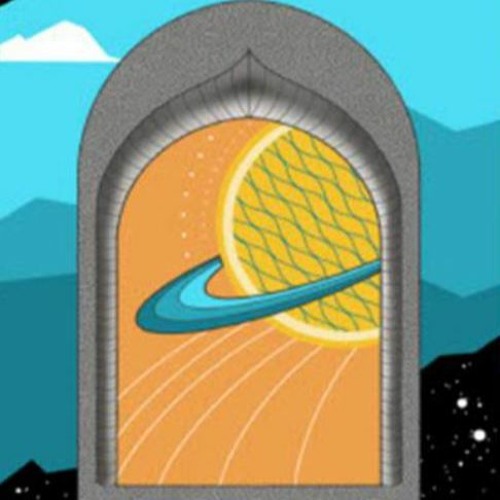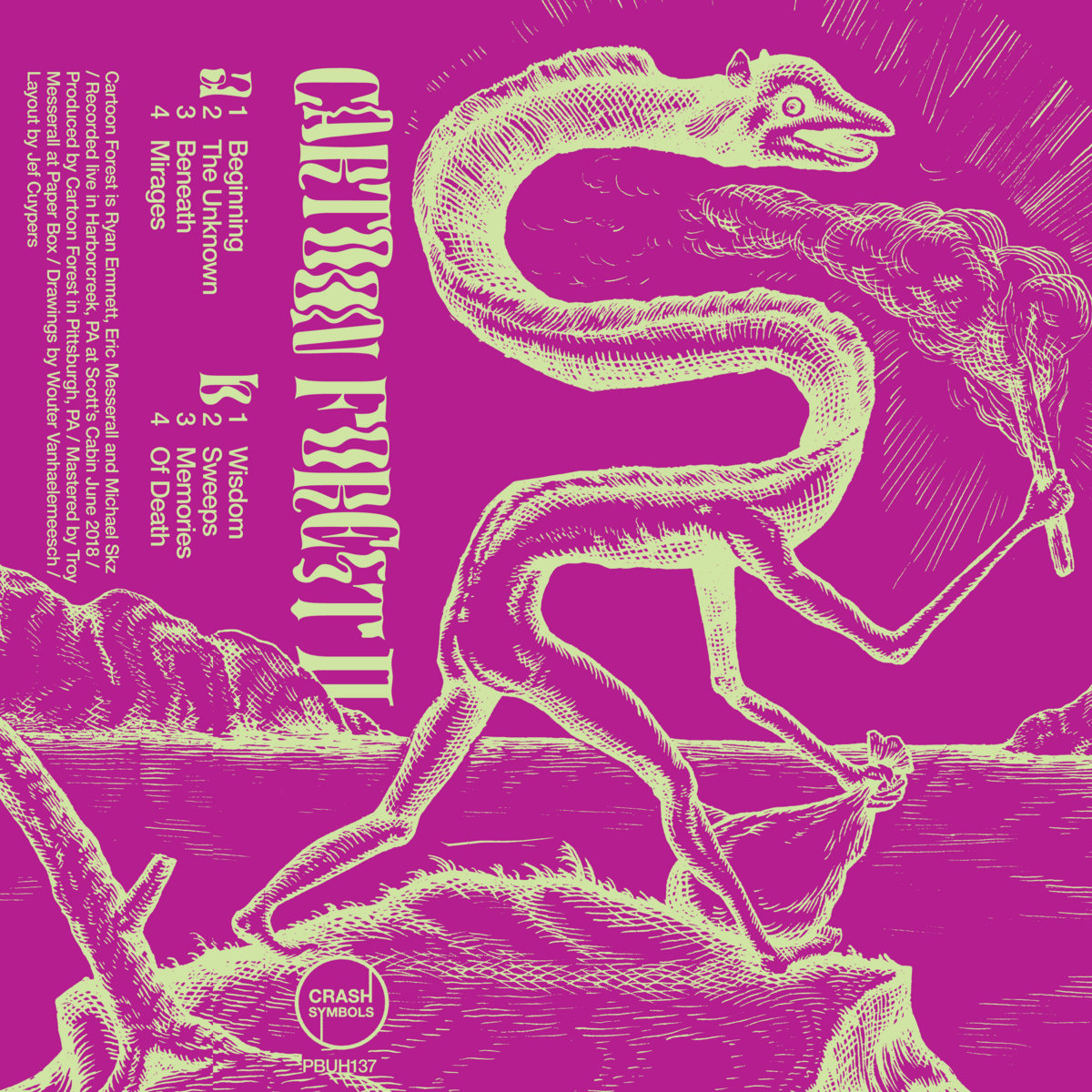Cassette Culture is a monthly column dedicated to exploring the various artists that inhabit the expansive cassette market. Drawing from bands and labels around the world, this column will attempt to highlight some of the best artists and albums from this global community.
Built around the twin creativities of harpist Marilu Donovan and singer-violinist Adam Markiewicz, LEYA is a way for both artists to explore their shared affinities for experimental and ambient music. Their latest record, Eyeline, a self-described mixtape and “not our new record” is a collection of songs that plays around with the obtuse melodicism so often associated with their musical interests. Featuring contributions from Julie Byrne, Eartheater, Claire Rousay, and others, the album is awash in gorgeous and challenging rhythms, an occasionally murky and impulsive descent into the lower reaches of ambient aesthetics. Voices sweep in from time to time, ghostly figures in a shadowy landscape, before they are escorted off to some parallel realm. The way in which Donovan and Markiewicz, and their collaborators, are able to blend minimalist movements and subtle melodic variations to create something so emotionally fraught and imposing is nothing short of a miracle — and it’s a miracle born of shifting musical contours and a restless ability to weave tactile sensations within these songs.
 Seirios Savvaidis
Seirios Savvaidis
Μεσουρανία / Ο Γάμος της Γουέντυ
(Sloow Tapes)
Seirios Savvaidis is a Greek musician whose work borrows liberally from ‘60s and ‘70s psych rock as well as the more cosmically minded folk artists of that same time. Compiling 2019’s Μεσουρανία and 2016’s Ο Γάμος της Γουέντυ, Sloow Tapes are presenting a radiant look into his music with this double EP cassette. There are overt nods to traditional Greek music here, as he digs into the past to find a way to develop a larger perspective on how his own music fits into the history of his country. Gently swaying acoustic ruminations sit comfortably alongside more muscular bits of personal introspection. Through the complex mechanism of these two EPs, we hear how multiple genres are able to inhabit the same space within his songs. He even brings in some Laurel Canyon vibes to smooth the transitions from sound to sound – he creates these living, breathing worlds, which seem to have always existed. It’s an exhilarating ride as we are carried along on the backs of his inspirations and see how he interpolates their various lineages.
 Cartoon Forest
Cartoon Forest
Cartoon Forest II
(Crash Symbols)
Pittsburgh trio Cartoon Forest’s sophomore album sounds like alien transmissions from the deepest part of the Pacific Ocean. Cartoon Forest II is bathed in aqueous noises and echoing ambience, vague and undefined but still slightly ominous and mesmerizing. The organic and the synthetic come together in a blur, dissolving all borders and presenting a seamless pairing of corporeal and wired efforts. These songs exist as expansive landscapes in which we’re easily disoriented and grasping in all directions to find our way back to the edge. There are moments when an earthen presence invades, bringing with it the hum of birdsong, the rattle of trains, and the thrumming wobble of organ sound. And then there are those sounds which are a complete mystery to me. Eventually, a calm settles over you, and the worries of the outside world fade away for a while. Cartoon Forest aren’t looking for escape necessarily, but they are doing their best to present the world in way that lessens its tremendous harshness and give us time to acclimate to whatever circumstance in which we find ourselves.
 Mickey Diamond
Mickey Diamond
Bangkok Adrenaline
(I Had An Accident Records)
Detroit rapper Mickey Diamond’s words hit with the force of a cement truck. Equal parts bravado and insight, his lyrics expose the darker undercurrents of a society that has pushed its marginalized people to the fringe. His latest album, Bangkok Adrenaline, combines movie samples, minimal beat arrangements, and subtle production touches to form the basis of this bleak but beautifully sculpted atmosphere. Between piano flourishes and buzzing synths, Diamond reveals the wisdom he’s learned over the years and doesn’t gloss over the struggles that have made him who he is. Split between conversational and accusatory, his voice can lacerate like a rusty knife, but it can also dole out affecting words of caution, offering his own experiences up as fodder for our personal growth. Bangkok Adrenaline is a vicious but measured look at life and the things we’re made to do to survive. He’s giving us direction on how to deconstruct an already broken system; we just have to listen and know when to act.
 Patrick Shiroishi & Kyle Motl
Patrick Shiroishi & Kyle Motl
Apparitions
(Notice Recordings)
Apparitions, the latest album from saxophonist Patrick Shiroishi and bassist Kyle Motl, is a frenetic and dizzying jaunt through the deep recesses of free jazz, aiming to unravel the secrets hidden therein. Across these four tracks, Shiroishi and Motl conduct a mini symphony of burbling sax and thudding bass that pushes back against any assumptions we might have had about jazz. Chaotic and undiluted, the music doesn’t wait around until we have a firm grasp on where it’s going. It isn’t looking to meet us halfway — we must fight to keep up as it zigzags along some unknowable path. But the challenge here is what makes the music so exhilarating. If you blink, you’ve missed something, some subtle variation or a melodic wobble. What becomes so fascinating is how you begin to try to anticipate the musicians’ next movements. You know it’s futile, but it becomes part of your active participation. And when you’re quickly proven wrong, you re-calibrate and begin the process all over again.
 Gabriel Seavers
Gabriel Seavers
Tuning
(Halfshell Records)
The work of guitarist Gabriel Seaver seems to exist in some timeless parallel universe, a place where American primitivism became the dominant musical form. His guitar styling feels simultaneously ancient and modern, straddling the line between tradition and innovation. The nine tracks across Tuning, his latest collection of songs, are haunting and filled with gossamer highlights. His fingers move with an easy rhythm, offering notes that glisten and roll off his instrument with no perceptible stress or restraint. He seemingly reaches up and plucks these gorgeous melodies from the air and then translates them for our pleasure. There are moments when I hear the reliquary plucks of Woody Guthrie, though I also hear the influence of artists like William Tyler and Sir Richard Bishop loping through the music. There is a casual power here, one that reveals its enormity through simple movements and the brilliance of Seaver’s intuition.


